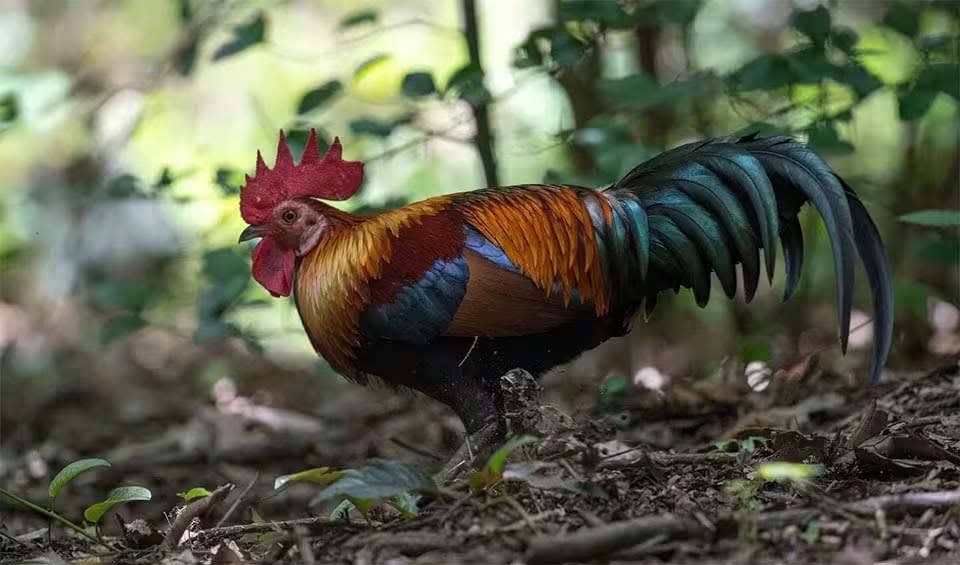A vibrant and historically significant bird recognized as the wild ancestor of the domestic chicken. This bird graces the dense forest habitats of Southeast Asia and parts of South Asia, showcasing a dazzling array of colors and behaviors that distinguish it from its domestic descendants.
Physiologically, the Red junglefowl exhibits several key differences from the domestic chicken. It has a leaner body mass and a more streamlined physique, adaptations that allow for greater agility and flight capability in the wild. The males, in particular, are known for their striking appearance: they boast a radiant plumage with a mix of fiery reds, golden oranges, and iridescent greens and blues, especially visible in the long, arching tail feathers and hackles. This brilliant coloration serves multiple functions, from signaling health and vigor to potential mates to asserting dominance among rivals.
The female Red junglefowl is more subdued in color, with brown and tan feathers that provide camouflage within the forest floor’s underbrush, where she nests and raises her young. This cryptic coloration is crucial for survival, as it allows her to remain inconspicuous to predators while incubating eggs and caring for chicks. Unlike the male, the female has smaller combs and wattles, which is typical for species where females must avoid detection.
Red junglefowl are inherently wary of humans, a trait that has been largely bred out of domestic chickens. They have retained much of their wild instincts, which include roosting in trees to avoid predators and foraging for a wide range of foods, including seeds, insects, and fruits. Their diet is instrumental in seed dispersal, contributing to the health of their ecosystems.
Distribution
 Australia
Australia Bangladesh
Bangladesh Bhutan
Bhutan Cambodia
Cambodia China
China Dominican Republic
Dominican Republic East Timor
East Timor Fiji
Fiji India
India Indonesia
Indonesia Jamaica
Jamaica Laos
Laos Malaysia
Malaysia Marshall Islands
Marshall Islands Micronesia
Micronesia Myanmar
Myanmar Nauru
Nauru Nepal
Nepal Nort. Mariana Is.
Nort. Mariana Is. Pakistan
Pakistan Palau
Palau Philippines
Philippines Puerto Rico
Puerto Rico Singapore
Singapore Thailand
Thailand United States
United States Vietnam
VietnamAnything we've missed?
Help us improve this page by suggesting edits. Glory never dies!
Suggest an editGet to know me
Terrestrial / Aquatic
Altricial / Precocial
Polygamous / Monogamous
Dimorphic (size) / Monomorphic
Active: Diurnal / Nocturnal
Social behavior: Solitary / Pack / Herd / Flock
Diet: Carnivore / Herbivore / Omnivore / Piscivorous / Insectivore
Migratory: Yes / No
Domesticated: Yes / No
Dangerous: Yes / No




